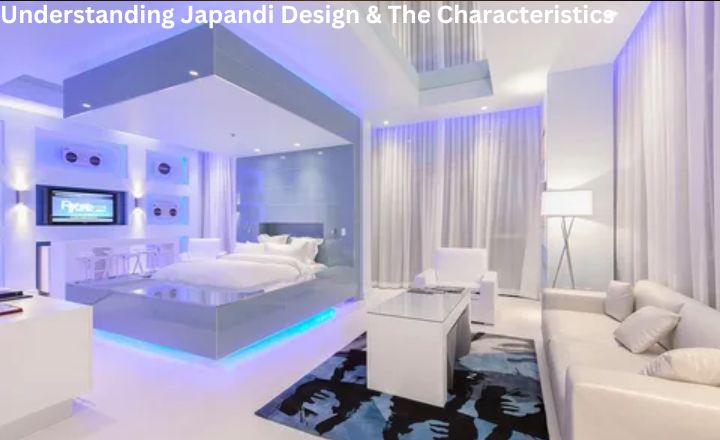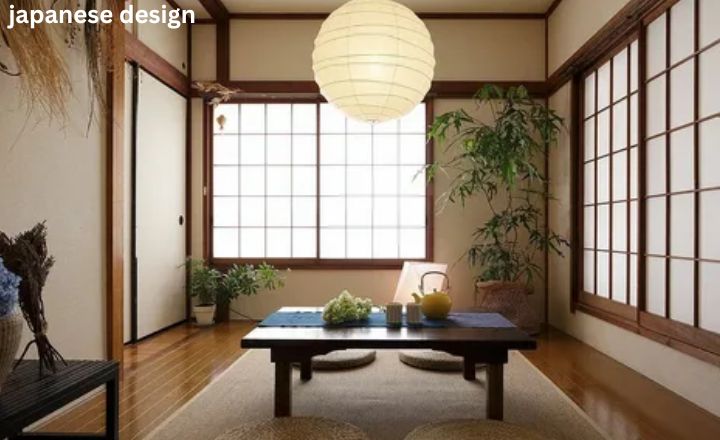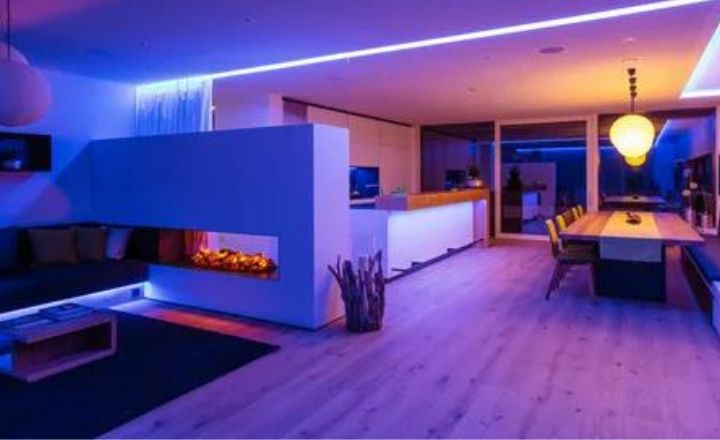
Japandi lighting charm seamlessly marries the clean lines of Scandinavian design with the warmth of Japanese aesthetics, creating an atmosphere that is both serene and inviting. When selecting fixtures, consider light sources that feature natural materials such as wood or bamboo, complementing the minimalist approach inherent in Japandi style. Statement pendants in intricate shapes can serve as artwork themselves while providing a soft glow, enhancing the tranquil vibe of your spaces.
Layering is key to achieving the perfect ambiance; think floor lamps with organic shapes paired with wall sconces that cast gentle shadows. This holistic approach not only brightens up your home but also creates visual interest without overwhelming your senses.
Dimmable LED bulbs can amplify versatility—allowing you to transition from bright task lighting during day to a cozy retreat at night. Embrace warm tones and muted colors to evoke a sense of calmness, transforming each room into a retreat that celebrates simplicity and functionality intertwined with artistic elegance.
Understanding Japandi Design & The Characteristics

Japandi design harmoniously fuses Japanese minimalism with Scandinavian functionality, creating spaces that feel serene yet inviting. One of its most alluring characteristics is the emphasis on natural materials, which promotes a sense of tranquility and connection to nature. Think handcrafted wooden furniture and clay pottery, complemented by soft textiles in muted tones. This interplay not only enhances the visual appeal but also encourages a tactile experience—a fundamental aspect of both cultures.
Lighting plays a vital role in Japandi interiors, transforming them into havens of warmth and coziness. Japandi lighting often features delicate fixtures made from natural elements such as bamboo or paper lanterns that diffuse light softly across a room, evoking calmness while highlighting clean lines and organic shapes. The intentional placement of light sources can create zones within open spaces without overwhelming the senses—allowing for both functionality during social gatherings and intimacy during quiet moments alone. By focusing on these thoughtfully designed aspects, one can truly appreciate how Japandi design nurtures an environment where simplicity meets depth.
Key Characteristics Of Japandi Design

Here are the key characteristics of this style:
Minimalism and Simplicity:
Minimalism and simplicity invite us to redefine our relationship with both possessions and experiences. By stripping away the excess, we create space not only in our physical environments but also within our minds. This intentional decluttering fosters a sense of clarity, allowing us to focus on what truly matters—be it meaningful connections, creative pursuits, or personal well-being.
Adopting a minimalist lifestyle challenges societal norms that equate success with accumulation. Instead of seeking validation through material wealth, minimalism encourages us to evaluate fulfillment through mindfulness and presence. Engaging in simplicity can lead to unexpected joys; a moment spent savoring a cup of coffee can become infinitely richer when untethered from distractions.
Natural Materials:
In the world of interior design, natural materials have taken center stage, especially within the Japandi aesthetic. The harmonious blend of Japanese minimalism and Scandinavian functionality offers a unique canvas for materials that breathe life into any space. Imagine lighting fixtures crafted from warm wood or soft bamboo; they not only illuminate but also foster a serene atmosphere that enhances mindfulness and tranquility. This connection to nature is more than a trend; it’s a way of inviting the outdoors in, creating spaces that feel grounded and organic.
Using natural materials goes beyond aesthetics—it speaks to sustainability and authenticity. By choosing environmentally friendly options like jute or linen in your textiles, you create an ambiance that tells a story while reducing your ecological footprint. When it comes to Japandi lighting, artisanal pieces made from clay or recycled metals can serve as conversation starters, merging functional design with craftsmanship heritage. Elevating everyday illumination into art not only beautifies your home but also reflects a deeper appreciation for nature’s resources—inviting both warmth and personality into modern interiors.
Neutral Colour Palette:
A neutral colour palette serves as a versatile canvas that can transform any space into a serene sanctuary, especially when complemented by the minimalistic elegance of Japandi lighting. By embracing soft beiges, warm greys, and crisp whites, homeowners can create an atmosphere that feels both inviting and calming. The understated allure of these hues allows for the layering of textures and materials, elevating the overall aesthetic without overwhelming the senses. Japandi lighting—characterized by its simple yet striking designs—elegantly highlights these muted tones, casting gentle shadows that enhance the tranquil energy within a room.
Incorporating natural elements further enriches this visual harmony. Think bamboo lampshades or ceramic fixtures that echo organic forms; they not only contribute to the tactile experience but also promote sustainability in design. Pairing neutral walls with carefully chosen lighting creates an interplay between light and shadow, allowing spaces to breathe while adding depth to their simplicity. A well-curated neutral palette paired with thoughtfully designed Japandi lighting invites mindfulness into daily living, fostering both comfort and sophistication in contemporary interiors.
Functionality and Practicality:
Japandi lighting transcends mere aesthetics, blending functionality with practicality in ways that enhance both form and experience. This design approach emphasizes not only the serene beauty of minimalist Japanese and Scandinavian styles but also the utility each piece offers. Lighting fixtures in this genre often incorporate sustainable materials and energy-efficient technologies, ensuring that they serve a dual purpose: illuminating spaces while promoting eco-conscious living.
Connection to Nature:
Connection to nature transcends mere aesthetics; it’s a vital pathway to wellbeing that can be beautifully enhanced by Japandi lighting. This design philosophy marries the minimalist, serene aspects of Japanese design with the warm, rustic charm of Scandinavian styles. By utilizing soft, natural light sources that mimic daylight, such as paper lanterns or wooden fixtures, you can create spaces that not only illuminate but also evoke a sense of calm and connection to the outdoors. Imagine relaxing in a softly lit room where each fixture nods to organic forms found in nature—shapes reminiscent of leaves or branches—and how this could transform your mood and enhance your creativity.
Handcrafted Elements:
In the realm of interior design, handcrafted elements are becoming increasingly sought after for their ability to infuse spaces with personality and warmth. This is especially true in Japandi lighting designs, where the delicate balance of Japanese minimalism and Scandinavian functionality comes to life through artisanal craftsmanship. Each piece tells a story—whether it’s a hand-turned wooden lamp or a meticulously woven pendant that captures the light in unique ways. These items not only cast shadows but also spark conversations, creating an environment that feels both curated and inviting.
Balanced and Ordered Spaces:
In the realm of interior design, balanced and ordered spaces serve as a sanctuary for the senses, combining minimalism with warmth. The Japandi aesthetic embodies this ethos brilliantly, harmonizing Japanese simplicity with Scandinavian functionality. Japandi lighting plays a pivotal role in achieving this tranquil ambiance; think warm LED fixtures that ooze soft glow rather than stark illumination. These carefully curated lighting elements not only highlight architectural features but also foster a peaceful atmosphere that nurtures mindfulness.
Behind mere aesthetics, the interplay between light and space emphasizes the importance of intentional design choices. Each luminaire becomes a strategic tool for creating zones within an open layout, guiding movement while maintaining visual cohesion. Consider pendant lights over dining areas or understated sconces flanking entryways; these subtle gestures enhance balance without overwhelming the senses. Embracing this philosophy encourages us to rethink our living spaces—not just as backdrops for daily life but as living ecosystems where every element thoughtfully contributes to our overall well-being.
Japanese vs Scandinavian Design

Japanese and Scandinavian design, when both rooted in minimalism, diverge significantly in their philosophies and aesthetics. Japanese design often celebrates the beauty of imperfection through the concept of wabi-sabi, which emphasizes natural materials, irregular shapes, and a deep respect for nature’s cycles. This approach invites a sense of tranquility and mindfulness into living spaces, encouraging dwellers to pause and appreciate the fleeting moments that define their existence.
Japanese Design

Japanese design, with its roots deeply embedded in nature and minimalism, transcends mere aesthetics to evoke a sense of tranquility and harmony. At the heart of this philosophy lies the principle of *wabi-sabi*, which celebrates imperfection and the beauty found in simplicity. This approach is vividly illustrated through modern interpretations like Japendi lighting, where Japanese sensibilities seamlessly blend with Scandinavian functionality. These light fixtures not only illuminate spaces but also create atmospheres that encourage mindful living.
The unique interplay between natural materials and innovative design sets Japendi lighting apart from more traditional styles. The soft glow emitted by these luminaires enhances their surroundings, marrying form with function while drawing attention to organic textures. As people seek refuge from the chaotic pace of contemporary life, designs inspired by Japanese principles reflect a longing for serenity in daily environments. Whether it’s an elegantly crafted paper lantern or a sleek wooden pendant lamp, each piece serves as a reminder that beauty lies not just in what we see but also in how it makes us feel—an illumination both literal and metaphorical.
Scandinavian Design

Scandinavian design has long been celebrated for its minimalism and functionality, but a delightful evolution is happening with the rise of Japandi lighting. This unique fusion of Japanese and Scandinavian aesthetics marries the clean lines and natural materials of Northern Europe with Japan’s philosophy of simplicity and intentionality. The result is a harmonious balance where light not only illuminates spaces but also enhances well-being, inviting mindfulness into everyday living.
Japandi lighting emphasizes warmth through soft hues and organic shapes that echo nature’s tranquility. Think handcrafted wooden fixtures paired with muted linens that softly diffuse light, creating an atmosphere steeped in serenity. This mindful approach encourages homeowners to invest in pieces that tell a story—each lamp or pendant reflecting craftsmanship while serving as a focal point that democratizes space in even the coziest corners. As we embrace this trend, it challenges us to consider how our environments can be curated not merely for aesthetics but as extensions of our lifestyle philosophies rooted in calmness and purpose.
Exploring Japandi Lighting Styles
Ok! Now we’ve covered all that, let’s get to the lights!
Floor lamps are ideal for creating cosy, well-lit spaces without the need for overhead lighting.
Creating Cosy Spaces:
Reading Nooks:
When it comes to creating the perfect reading nook, lighting design plays a pivotal role in setting the mood and enhancing the experience. Natural light is often celebrated for its warmth, but pairing it with carefully selected artificial lighting can transform your cozy corner into an enchanting escape as day turns into night. Consider installing adjustable wall sconces or a stylish floor lamp to provide layers of illumination, allowing you to fine-tune the brightness according to your reading material’s needs. This flexibility not only fosters comfort but also makes your nook versatile enough for activities beyond reading—like relaxing with a cup of tea or hosting impromptu conversations.
Textured accents such as throw pillows and blankets invite tactile exploration, encouraging you to linger longer within that serene space. Integrating subtle colors into your lighting scheme can evoke various emotions: soft blues might promote tranquility while warm yellows create an inviting atmosphere that beckons you to dive deeper into fictional realms. Don’t forget about personal touches like favorite quotes framed on the wall or curated book displays—these elements breathe life into your nook, making it uniquely yours. In essence, by thoughtfully considering lighting design along with personal flair, you can cultivate a reading sanctuary that’s both visually captivating and profoundly comforting.
Corners:
Corners are often overlooked in interiors, yet they possess incredible potential to transform a space when thoughtfully curated. By integrating Japandi floor lamps into these neglected areas, you can create a warm, inviting atmosphere that encourages relaxation and reflection. The minimalist aesthetic of Japandi design, with its blend of Japanese simplicity and Scandinavian functionality, works harmoniously in corners to highlight their beauty while also serving practical purposes.
Imagine incorporating a sleek Japandi floor lamp beside a plush armchair nestled in the corner of your living room; the soft, diffused light casts gentle shadows that embrace the surrounding decor. Add a few carefully chosen plants or textured throw blankets to amplify the cozy vibe. Utilizing corners not just as storage spaces or dead zones but as intentional micro-havens allows for unique opportunities to express creativity while enhancing comfort within your home. Embracing this approach transforms every nook into an integral part of your harmonious living experience.
Versatility and Aesthetic Appeal:
Dining Areas:
Corners in dining areas often go unnoticed, but they can transform an ordinary space into a cozy nook that invites conversation and connection. By incorporating elements like Japandi floor lamps, you can not only illuminate these underutilized spots but also enhance their versatility and aesthetic appeal. Their minimalist design seamlessly blends Scandinavian functionality with Japanese craftsmanship, creating an inviting atmosphere that is both calming and stylish.
To make the most of corner dining spaces, consider layering lighting with Japandi floor lamps. This approach not only provides ambient lighting for meals but also adds depth to the room—highlighting textures of wooden furniture or lush greenery from nearby plants.
Entryways:
Entryways often serve as the silent ambassadors of our homes, setting the tone for what lies beyond. A thoughtfully curated entryway can effortlessly blend functionality and style, creating a welcoming atmosphere that reflects personal taste. One element that can elevate this space is the inclusion of Japandi floor lamps. Their clean lines and gentle curves embody the harmonious balance between Japanese minimalism and Scandinavian warmth—qualities that resonate beautifully in an entryway.
Imagine stepping into a space where muted colors meet natural materials, enhanced by soft illumination from a Japandi floor lamp. This lighting choice not only provides practical brightness but also serves as a statement piece, instilling an aura of tranquility amidst the hustle of daily life. The versatility and aesthetic appeal of these lamps make them ideal for varying design schemes; whether you prefer a more traditional setup or lean towards modern decor, these lamps can adapt seamlessly while maintaining their chic elegance.
Living Rooms:
To draw attention to particular spaces, like reading nooks or the spaces above tables for sitting, use pendant lights. Seek for patterns with straight, basic lines that go well with the austere aspects of Japanese design. These have very beautiful and charming Japanese designs.
Japandi Table Lamps
Table lamps can be utilised to improve the mood of different locations in addition to providing necessary task lighting. They are ideal for adding concentrated light where it is most required.
Task Lighting Essentials:
Bedside Tables:
Table lamps are essential for providing soothing light by the bed for reading or relaxing. Seek for lamps that allow you to change the brightness of the light as needed. It is also a way of pleasure. It has a very sweet light.
Desks:
Focused light from a table lamp is crucial for productivity in a home office or study space. Select a style that goes well with your work area. It has a charming effect.
Japandi Paper Lanterns
Japandi paper lanterns are vital components that represent the spirit of the Japandi aesthetic.
Crafted from organic materials like rice paper, referred to as “washi” in Japanese, these lanterns provide gentle, dispersed light that fosters a calm and peaceful ambiance.
Classic Elegance and Soft Light:
Living Rooms:
Paper lanterns provide a cosy and welcoming glow and can be used as practical or ornamental elements. To improve the atmosphere, put them next to seating areas or in corners.
Bedrooms:
For a soft, soothing glow that encourages rest and relaxation, place paper lanterns by the bed.
Outdoor Spaces:
Weather-resistant paper lanterns add a touch of Japanese beauty to patios and gardens, enhancing your outdoor spaces.
Subtle Ambient Lighting:
Hallways:
Choose wall sconces that emit a gentle, diffused light to establish a cosy ambiance.
Living Spaces:
Wall sconces can be used to draw attention to artwork or architectural details. The ideal sconce can give your design depth and intrigue.
